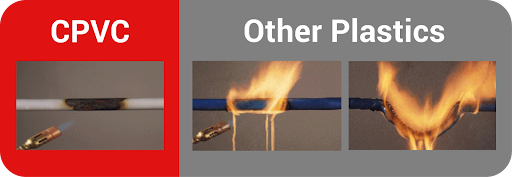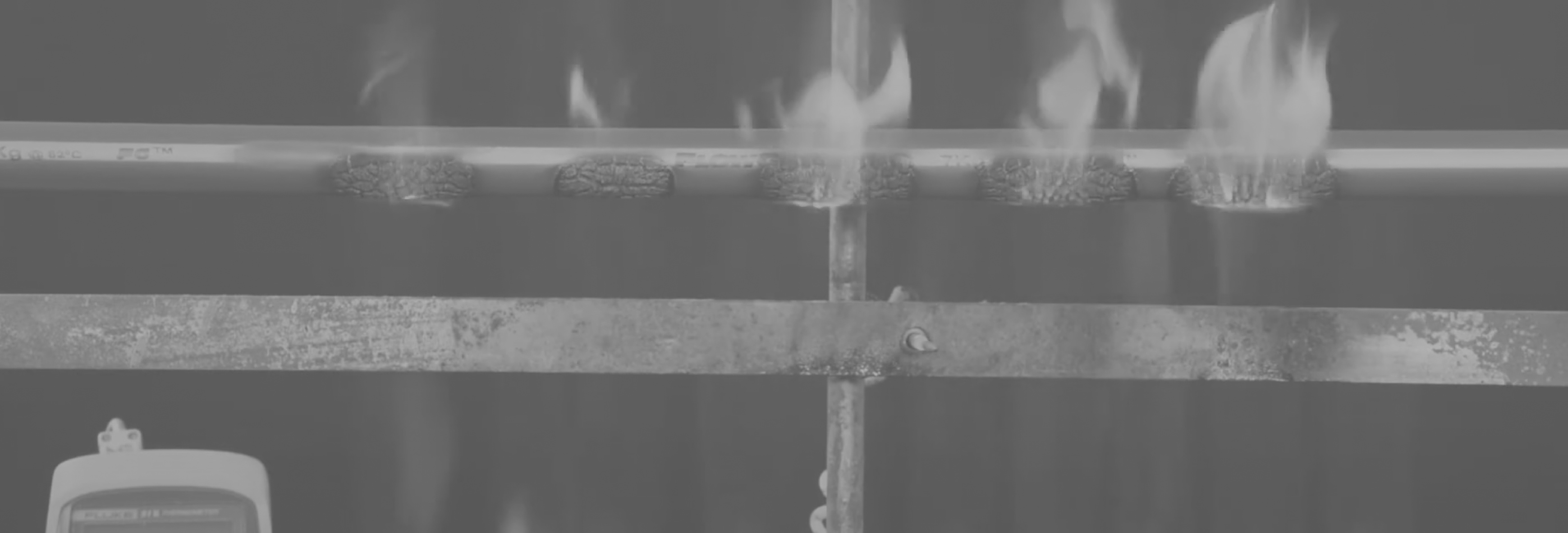The Importance of Fire Rated CPVC Pipe
-
The specification of pipe material plays a critical role in fire safety for residential plumbing systems
-
There are numerous key advantages to using chlorinated polyvinyl chloride fire rated CPVC pipe over other thermoplastics
-
FlowGuard CPVC’s key fire-resistant properties make it a trusted choice for homeowners and plumbers
Electrical shorts or power overloads can cause a fire to ignite near your plumbing pipes. Depending on the material of the pipe, your plumbing system may actually make the fire worse and spread it throughout the home.
While some thermoplastics like polypropylene (PPR) aren’t built to withstand heat or fire, that’s not the case for all. Specifically, chlorinated polyvinyl chloride (CPVC) is engineered to limit flammability and smoke generation.
In fact, FlowGuard® CPVC has been tested in accordance with EN 13501-1:2002 (a test of how well a material will react to fire) and earned the best possible fire-resistant rating a non-metal material can receive.
So, what are the fire-resistant properties that make CPVC pipe a trusted material for residential plumbing systems?
FlowGuard CPVC is Ignition Resistant
CPVC is self-extinguishing and has a high flash ignition temperature, meaning there needs to be an extreme amount of heat for the material to combust. FlowGuard CPVC has a flash ignition temperature of 482°C, whereas PPR has a flash ignition temperature of 340°C. For reference, many other ordinary materials, like wood, ignite at 260°C or less.
FlowGuard CPVC is Burn Resistant
FlowGuard CPVC has a limiting oxygen index (LOI) of 60, meaning that it requires 60% oxygen in the air to sustain a flame. For reference, Earth’s atmosphere is made up of 21% oxygen. Other thermoplastics, like PPR, have an LOI of less than 20, meaning once they ignite, they will continue to burn even when the fire source is removed.

The heat of combustion of PPR is about three times more than CPVC, meaning it’s easier for it to burn and generate more heat—which often results in flaming drips.
On the other hand, CPVC is self-extinguishes once the fire source is removed and will not allow a fire to propagate and transfer from room to room, or floor to floor.
FlowGuard CPVC Limits Smoke Generation
All thermoplastics emit smoke during burning. But because of the way CPVC is engineered, it limits the amount of smoke produced. Homeowners can rest assured that smoke generated by CPVC is no more toxic than smoke generated by wood as revealed by testing conducted by United States Testing Company.
FlowGuard CPVC Provides Greater Material Safety
FlowGuard CPVC provides excellent safety and performance characteristics when subjected to fire, providing peace of mind to plumbers and homeowners during and well after installation.
If you have questions about the fire resistant properties of FlowGuard CPVC pipe, contact our team of piping consultants.
DELIVERING
RELIABILITY
For more than 50 years, FlowGuard® Pipe and Fittings has provided reliable hot and cold water plumbing systems to residential and commercial buildings around the world.
DELIVERING
RELIABILITY
For more than 50 years, FlowGuard® Pipe and Fittings has provided reliable hot and cold water plumbing systems to residential and commercial buildings around the world.
.png)
-1.png)
